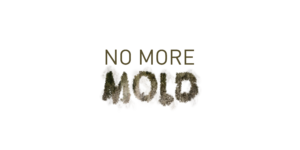Mold Inspection and Removal In Clearwater
Mold is a fungus that thrives in damp environments, both inside and outside of your house. When present in little quantities, these spores are frequently harmless, but when they come into contact with a moist surface, they grow and become more dangerous (depending on the type of mold). If the circumstances are right, growing mold could potentially spread to more rooms in your home, causing harm, health issues, and expensive repairs. However, moisture is necessary for mold to survive. Homeowners and potential buyers can take preventative action to lessen the risk of mold growth by keeping the house dry. By removing moisture as soon as possible and making sure the laundry, kitchen, and bathrooms are properly aired, mold growth can be stopped.
When Mold inspection and Testing Needed in Clearwater
If you discover any, it is a good idea to hire an inspector to evaluate the home for mold. You should also heed the recommendations of your home inspector if they discover any signs of water damage or moisture. Even if the water damage appears to have been done long ago, mold may still be a concern. A mold examination is also suggested if you notice a strong musty smell. Mold may be growing behind drywall or in a shadowy area. It is suggested that a professional mold test be carried out by qualified individuals with experience and knowledge. Due to their experience with sample collection and air quality testing, the professional will be better able to provide you with accurate results and recommendations for mold treatment.
Another reason to choose professional mold inspection and testing is that the amount of mold spores may fluctuate and spread throughout the home. A trained mold inspector often does multiple different types of mold tests to acquire the most accurate results. Home testing are unable to produce results with this level of precision.

Difference Between Mold testing and Mold inspection?
As part of the mold inspection procedure, the home inspector or mold inspector evaluates the building visually. Additionally, the inspector will discuss with the homeowner any previously found water damage, leaks, moisture issues, and mold growth.
Mold testing is done in a lab using samples that were obtained during the mold inspection. The collected samples are examined in a highly controlled environment. The varieties of mold present as well as the quantity of mold spores in the indoor air are identified. Some mold inspections may also include mold testing.
How Does a Mold Inspection Work in Clearwater?
The inspector will start by looking over any potential mold-prone areas. Additionally, the inspector will do a visual inspection of the remainder of the house, paying close attention to any areas where mold is known to regularly develop. The home inspector may employ instruments like moisture meters or infrared cameras to locate moisture in drywall or other hard-to-reach areas. The origin of the moisture can also be determined. This will help in finding a solution to the issue.
The inspector will then make a suggestion for further action. The first step of the plan deals with the moisture problem. The home inspection may have discovered a leaky roof, for instance, or more investigation may be needed. Without addressing the moisture problem, mold removal is ineffective since it will eventually resurface. If the mold does not spread over a big area, you might be able to finish the cleanup by yourself. If it contaminates a larger area, it is advisable to speak with a mold cleanup specialist. The professionals will have the necessary tools and protective clothing to finish the job safely and effectively.
Mold removal Procedure in Clearwater
Even though every mold damage situation is different and necessitates a specific course of action, the general mold cleanup process remains the same. The normal process is shown in the steps that follow.
- Emergency Contact
When you call us, the mold cleanup and restoration process starts. To determine the necessary tools, resources, and manpower, our professional will pose a series of inquiries.
- Evaluation of The Inspection and Mold Damage
Mold will be carefully investigated in your home by https://911.es. Mold is able to hide from view and consumes both cellulose and water as food. We use a variety of techniques to locate hidden water sources and mold.
- Mold Containment
We’ll use a number of containment tactics to prevent the mold from spreading. We may use a sophisticated containment device, such as a negative air chamber, to physically separate the contaminated area, maintain negative air pressure, and stop the spread of mold spores during the cleanup procedure. To inhibit the spread of mold, it is possible to shut off all fans, heating, and cooling systems.
- Air Filtering
Using specialized filtering apparatus, we can remove tiny mold spores from the air. We employ powerful “air scrubbers” and HEPA vacuums during the mold cleanup procedure to prevent the spread of dangerous mold spores.
- Eliminating Mold and Items Infested with Mold
How to remove mold depends depend on the amount of mold growth and the types of surfaces it occurs on. We uses antifungal and antimicrobial treatments to eliminate existing mold colonies and help in the prevention of the development of new ones. In order to remove severe mold development, porous materials like plasterboard and carpets might need to be removed and discarded.
- Cleaning The Items and Contents
We may also clean your furniture, decorative items, draperies, clothing, and other mold-damaged salvageable items. We’ll use a variety of cleaning techniques to clean and sanitize your belongings. Additionally, we have training in the use of fogging equipment and other deodorizing methods.
- Restoration
Depending on how much the mold has harmed the area, it can be necessary to remove drywall, subfloors, and other construction materials. Restoration might involve small fixes like repainting, installing new carpet, and replacing damaged drywall, or it can involve major work like fully rebuilding the various rooms or areas of a home or place of business.
